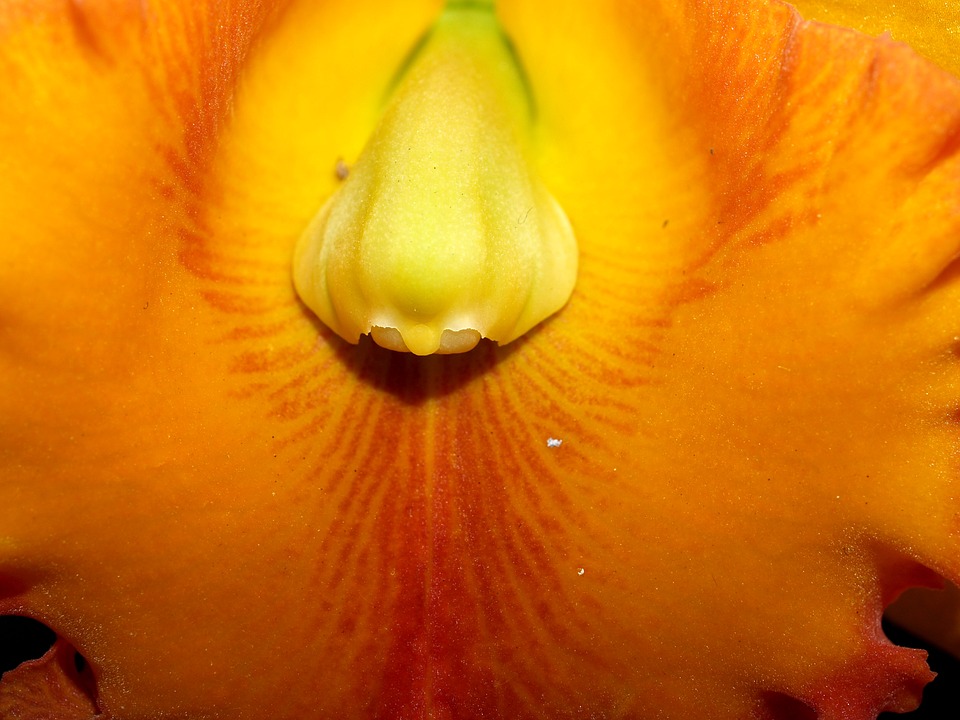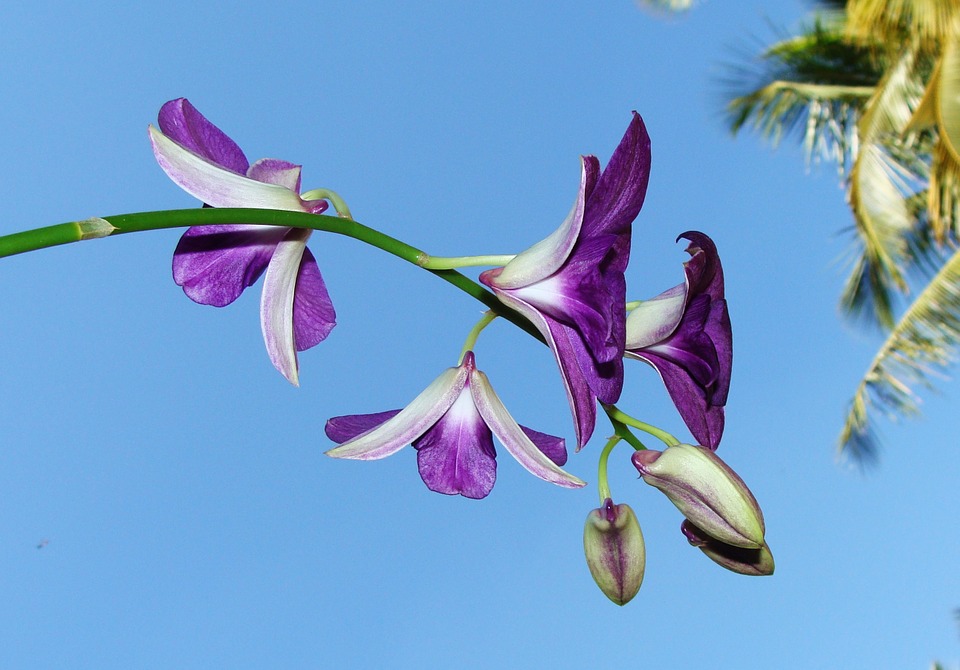This article explores the potential risks of orchids to cats, providing detailed information about specific species and offering practical tips to ensure your feline friend's safety.
Part 1: The Orchid's Enigmatic Reputation

1.1 Orchid Toxicity: Debunking the Myth
- Despite a prevalent misconception, most orchid varieties are considered safe for cats.
- The Orchidaceae family, with its thousands of species, is generally not known for producing substances toxic to felines.
- The American Society for the Prevention of Cruelty to Animals (ASPCA) classifies orchids as non-toxic to cats, offering reassurance to concerned pet owners.
1.2 The Roots of the Misconception
- The belief that orchids are toxic likely stems from the general assumption that all plants pose a potential threat to pets.
- The visual resemblance of orchids to known toxic plants, such as lilies, can further contribute to this misconception.
- However, scientific evidence suggests that the majority of orchid species are harmless to cats.
Part 2: Navigating the World of Orchids

2.1 The Vast Realm of Orchids
- The Orchidaceae family is remarkably diverse, encompassing a wide range of shapes, sizes, and colours.
- This diversity makes it essential to identify specific orchid types to determine their potential risks.
2.2 Common Household Orchids: Generally Safe
- The majority of orchids commonly found in homes, including Phalaenopsis (Moth Orchid), Cattleya, Dendrobium, and Oncidium, are considered safe for cats.
- These species have not been documented to contain toxic compounds that could harm cats.
Part 3: The Rare Exceptions: Orchids to Watch Out For
3.1 The Case of Cymbidium Orchids
- While most orchids are safe, Cymbidium orchids, also known as Boat Orchids, are a notable exception.
- Some reports suggest that Cymbidium orchids can cause mild gastrointestinal upset in cats, manifesting as vomiting or diarrhoea.
- These symptoms are usually temporary and not life-threatening.
- However, if you suspect your cat has ingested any part of a Cymbidium orchid, seeking veterinary advice is essential.
3.2 Understanding the Potential Risks
- The exact mechanism behind the potential toxicity of Cymbidium orchids remains unclear.
- It's possible that certain compounds within the plant might trigger a reaction in some cats.
- However, it's important to remember that these incidents are relatively rare.
Part 4: Signs of Orchid Ingestion in Cats
4.1 Observing Your Feline Friend
- Keeping a close eye on your cat's behaviour and physical appearance after encountering an orchid is crucial.
- Early detection of any unusual symptoms can help determine if veterinary intervention is necessary.
4.2 Common Symptoms to Watch For
- Gastrointestinal upset: Vomiting, diarrhoea, loss of appetite, and abdominal discomfort.
- Mouth irritation: Excessive drooling, pawing at the mouth, and signs of oral discomfort.
- Lethargy: Apathy, decreased activity levels, and lack of energy.
- Other potential signs: Tremors, seizures, difficulty breathing, and changes in behaviour.
4.3 When to Seek Veterinary Care
- If you observe any unusual symptoms in your cat following contact with an orchid, even if they are mild, it's best to err on the side of caution and seek veterinary advice.
- Prompt veterinary attention can help ensure a swift recovery and prevent potential complications.
Part 5: Preventing Orchid Mishaps: Safeguarding Your Feline Companion
5.1 Keeping Orchids Out of Reach
- Place your orchids on high shelves or hanging baskets, out of your cat's jumping range.
- Use sturdy furniture that can withstand your cat's climbing attempts.
- Consider securing the plants with wire or netting to prevent them from being pulled down.
5.2 Employing Deterrents: Discouraging Curiosity
- Utilize citrus peels or sprays to deter your cat from approaching the orchids.
- Cats are naturally sensitive to citrus scents and are likely to avoid areas with a strong citrus aroma.
- You can place citrus peels near the base of the plants or spray a diluted citrus solution around the area.
5.3 Alternative Plant Choices: A Safe and Beautiful Option
- Explore a wide variety of non-toxic plants as alternatives to orchids.
- Consider spider plants, African violets, Boston ferns, or other cat-friendly plants.
- These plants offer a similar aesthetic appeal without the risk of harm to your cat.
Part 6: FAQs About Orchids and Cats
6.1 Are all orchids toxic to cats?
No, most common household orchids are considered safe for cats. However, Cymbidium orchids are a rare exception and have been associated with mild gastrointestinal upset in some cases.
6.2 What are the signs of orchid poisoning in cats?
Signs of orchid ingestion can include vomiting, diarrhoea, drooling, lethargy, and pawing at the mouth. If you notice any of these symptoms, contact your veterinarian immediately.
6.3 How can I prevent my cat from eating orchids?
Keep orchids out of your cat's reach by placing them on high shelves or hanging baskets. You can also use citrus peels or sprays to deter them from the area.
6.4 Are orchid flowers toxic to cats?
While the flowers themselves are generally not toxic, it's best to err on the side of caution and prevent your cat from ingesting any part of the plant.
6.5 Are orchid leaves toxic to cats?
Similar to the flowers, orchid leaves are not typically toxic, but it's always best to keep them out of your cat's reach.
6.6 What should I do if my cat eats an orchid?
If you suspect your cat has ingested any part of an orchid, contact your veterinarian immediately. They can advise on the appropriate course of action.
Everyone is watching

Are Cat Ribs Flexible? Understanding Their Anatomy
CATS & KITTENSThis article delves into the fascinating world of feline anatomy, exploring the flexibility of cat ribs and ho...

Can Cats Eat Bananas? (Everything You Need to Know)
CATS & KITTENSThis article dives into the intriguing question of whether cats can safely enjoy the sweet, yellow fruit, bana...

Cat Lifespan: How Long Do Cats Live?
CATS & KITTENSThis comprehensive guide explores the factors influencing the lifespan of our feline companions, providing ins...

Can Cats Get COVID-19? What You Need to Know
CATS & KITTENSThis article will delve into the fascinating world of feline COVID-19 susceptibility. We'll explore whether ca...

Can Cats Eat Eggs? A Complete Guide to Egg Safety for Your Feline Friend
CATS & KITTENSWhen it comes to treating our furry companions, we all want to ensure we're doing what's best for them. Eggs...
